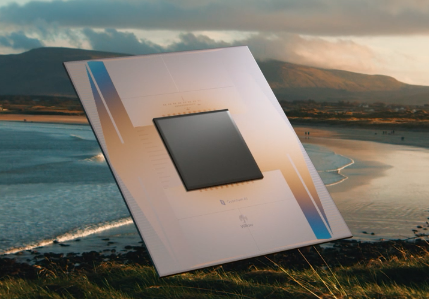Table of Contents
I find it hard to understand quantum computing, but the more I learn I am getting really excited. Google announced a new chip for quantum computing called Willow that could really change computing dramatically.
I spent ages with Google’s announcement in NotebookLM and Gemini in AI studio.
We talked quite a bit about what quantum computing means. (Note: If you have good knowledge of quantum computing and notice errors in my explanation, please do reach out to let me know.)
Understanding Quantum Computing
Our computers today represent values in bits that can have a value of 0 or 1. This is like a light switch that is either on or off. Quantum computing uses something called qubits which is like having a dimmer switch instead. It can be fully on, fully off, or anywhere in between. A qubit can exist in a superposition of multiple states at one time.
When one or more qubits become linked together they become entangled. This means that you can measure the state of one qubit and instantly know the state of the other, no matter how far away it is.
For example, let’s say you were trying to find the perfect molecular structure for a new drug. A quantum computer could use entangled qubits to represent different parts of a molecule and their entangled state would allow the computer to simulate how those parts interact simultaneously. Instead of trying each combination one by one, you could quickly find the most effective drug configuration.
OK, so now we have more of an idea of what quantum computing is, let’s talk about Willow.
Why is Willow such a big deal?
Willow is a new quantum chip which allows computers to use more qubits, and subsequently do more calculations.
Until now, when multiple qubits are joined together, it increases the chances of error. Gemini told me to imagine building a house of cards. The bigger it gets, the more likely it is to collapse. As the number of qubits in a system increases, it becomes exponentially harder to fine-tune the necessary control signals. An error in one qubit quickly propagates and affects the others.
Willow uses advanced error correction techniques with something called surface codes. Surface codes involve arranging qubits in a lattice. In this system, the more qubits they use, they actually reduce the chance for errors. Google says this cracks a key challenge in quantum error correction that has been pursued in quantum computing for 30 years.
The Willow chip was used to solve a computation in 5 minutes that would take one of today’s fastest supercomputers 10 septillion (1025 years). This is a number that vastly exceeds the age of the Universe. Wow.
This breakthrough has the potential to allow computers to handle incredibly complex calculations. There is still more work to be done, but one day this system could be used for drug discovery, materials science and optimization problems in logistics and finance. It also could be used for breaking unbreakable encryption on cryptography.
I can't wrap my head around how much quantum computing will change AI - allowing for more computing power for machine learning systems.
It's so cool to see AI leaders congratulating Google on this accomplishment


Want to learn more? I gave the Willow Article plus some information on quantum computing to NotebookLM's podcast hosts. This is pretty cool:
This post was originally a part of my newsletter. Subscribe to stay up to date on the latest news in AI and Search.

